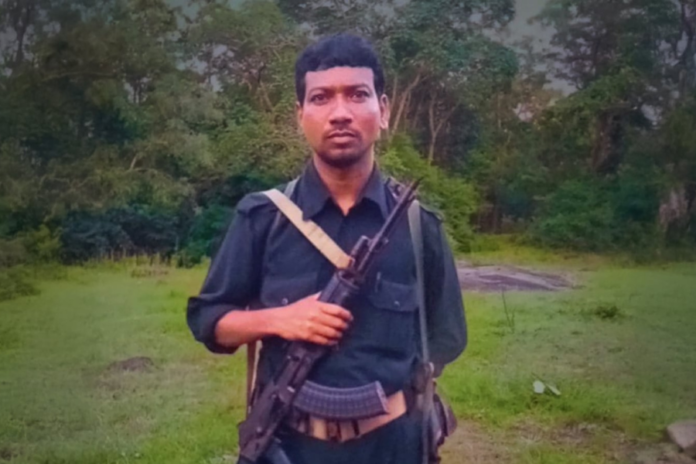India Fights Maoist Terror: Due to its waterfalls and some of the greatest views in the Eastern Ghats, the Maredumilli forest in Andhra Pradesh has long been a popular tourist destination. However, close to the Andhra Pradesh-Chhattisgarh-Odisha trijunction, its thick vegetation also conceals a sinister secret: a red corridor.
Madvi Hidma, the feared Bastar Maoist commander who was slain in a gunfight on Tuesday, was eventually apprehended by security authorities in this region. As security forces pursue the Center’s March 31, 2026 deadline to eliminate one of India’s most serious internal security concerns, Hidma’s death will rate highly on the list of operations intended to decapitate the Maoist leadership and its armed wing.
After more than 20 years, it appears that the tables are finally turning, as seen by the recent deaths and wave of surrenders. These days, anti-mine trucks, highly skilled state police officers, protected police stations, and helicopters and drones are all part of security operations. Through its Special Central Assistance program to remedy gaps in public infrastructure, the government reaffirmed in May that it would establish the rule of law and promptly make up for losses in areas deprived of development.
The odds were stacked against the security forces in the Red Corridor, which runs from Tirupati (Andhra Pradesh) to Pashupati (Nepal), when the Congress-led United Progressive Alliance (UPA) took office in New Delhi in August 2004. In a surprising electoral decision, Atal Bihari Vajpayee’s NDA alliance was defeated, paving the door for Manmohan Singh’s UPA I. The CPI (Maoist) was yet to emerge. The main Maoist organization was the People’s War Group. The PWG was founded in 1980 by Kondapalli Seetharamaiah, who was later expelled. Its cadres were trained in the philosophy of Mao’s organized peasant uprising and instructed to reject parliamentary democracy in favor of establishing a “people’s government” by “people’s war.”
In actuality, the PWG belonged to a family of brothers and sisters in arms who could all trace their ancestry back to Charu Majumdar’s rebellion in the village of Naxalbari in north Bengal. Stretching northward in an almost crescent shape from Andhra Pradesh through the forests of eastern Maharashtra, south-east Madhya Pradesh, Chhattisgarh, Odisha, Jharkhand, and Bihar before sneaking into Nepal, the cadres occupied space in the dark heart of India, primarily in isolated, underdeveloped, and tribal-dominated areas. They even gave it a name: the “Compact Revolutionary Zone that will feed the final insurrection” to topple the government.
To make matters worse, state governments—particularly those in Andhra Pradesh—had been playing footsie with the Maoists by intermittently turning on and off police operations, which had a negative impact on morale and efficiency. Months after Chief Minister N Chandrababu Naidu had escaped a PWG assassination attempt, YS Rajasekhara Reddy’s new state government halted Greyhounds activities in June 2004 and declared negotiations with Maoists. It highlighted a poll pledge to deal with what it saw as merely a socioeconomic issue.
The Maoists needed time, thus that short-term ceasefire worked for them. P Varavara Rao, who insisted he was a revolutionary poet and not a Maoist ideology, stated at his house in Malakpet, Hyderabad, that the YSR administration wished to speak with the PWG since they were “not asking for immediate transfer of power.”
Officers warned that the Maoists would utilize the ceasefire to regroup, but their warnings were ignored. And that’s precisely what took place. The PWG and the Maoist Communist Centre of India combined in September of that year, creating the CPI (Maoist). Officers, with their hands tied, blamed it on “the sins of Andhra” and “the confusion in Delhi.” On the one hand, the home ministry was advising the government not to engage in any peace talks with left-wing extremists, while on the other hand, the Center was instructing states to hold talks with the Maoists. Affected states were expected to deal with left-wing extremism as a law and order issue.
Stints in Maoist-affected areas were viewed by police officers as forms of punishment. Those who attempted to fulfill their duties frequently lacked the resources. The Gadchiroli police, ill-prepared for challenging circumstances, had devised their own solution: A C60 commando force divided into 14 units, one for each of the region’s 14 dalams (armed Maoist squads).
However, they were aware that this was insufficient to neutralize the threat. Instead of Central troops, officers wanted more police stations. They claimed that having a large thana network would be crucial since it would increase police visibility inside, boosting local trust. Additionally, acquiring intelligence had to be done locally, which could only be accomplished by recruiting persons who spoke the local dialect.
Also Read: How will killing of Naxalite leader Hidma affect Maoist movement?
On the ground, however, not much changed. The number of Maoist cadres increased along with their acts of intimidation, extortion, and terror. Prime Minister Manmohan Singh called it “the single biggest internal security challenge ever faced” by India in an April 2006 speech to chief ministers of states afflicted by Maoism.
Under the Unlawful Activities (Prevention) Act, the Center outlawed the CPI (Maoist) and its front organizations in June 2009. Maoists launched their worst assault on security forces less than a year later. They killed 76 people when they ambushed a CRPF convoy close to Tadmetla in Chhattisgarh. There were 126 impacted districts by 2013. The Congress leadership in Chhattisgarh was destroyed in May of that year when Maoists ambushed its convoy at Jhiram Ghati in Darbha.
Following the 2014 change of government in Delhi, a crackdown that had started in earnest during the UPA’s second term gained momentum. The Narendra Modi administration created a strategy that gave top priority to constructing infrastructure, expanding welfare programs, strengthening the security forces, and filling the administrative void. It targeted Maoist leaders and stifled their funding. The administration claims that there are now only 11 vulnerable areas, down from 38 in 2024. Although there is still plenty to learn, things appear to be shifting.



